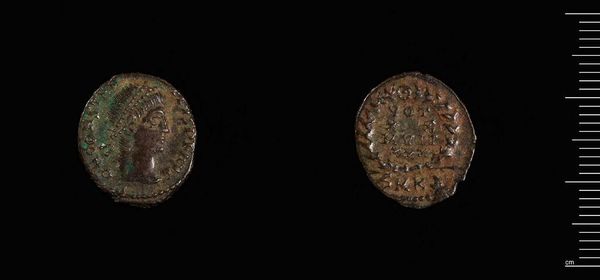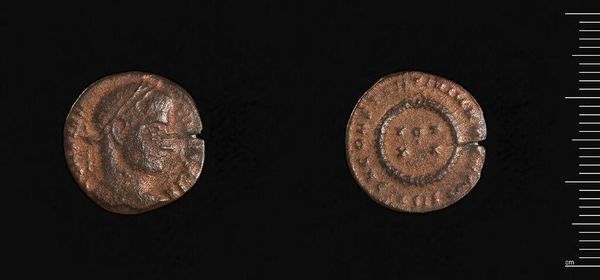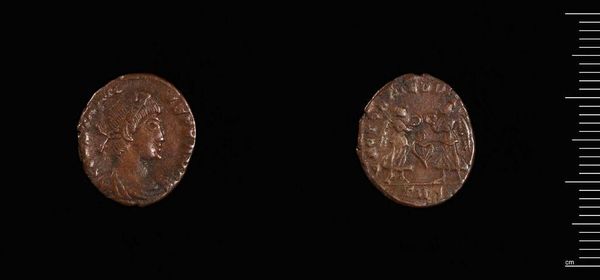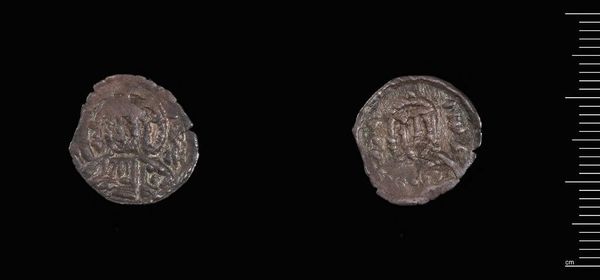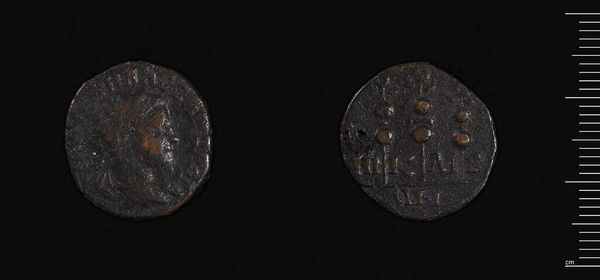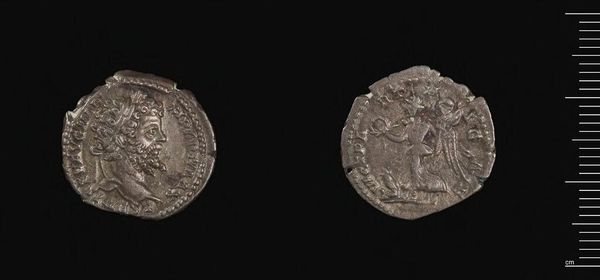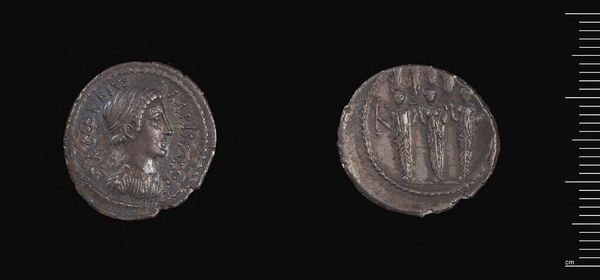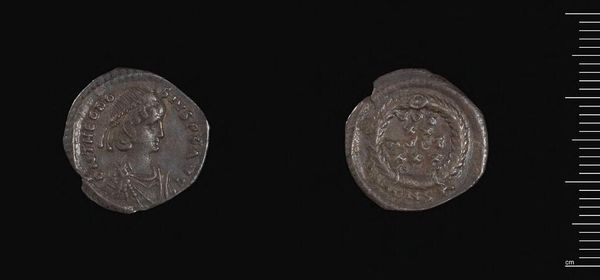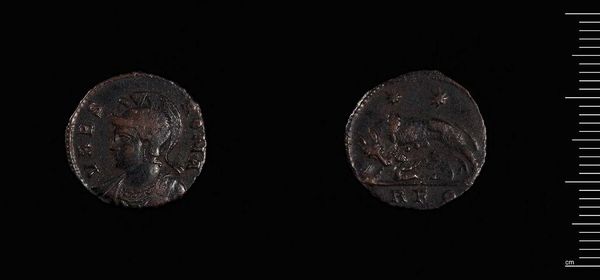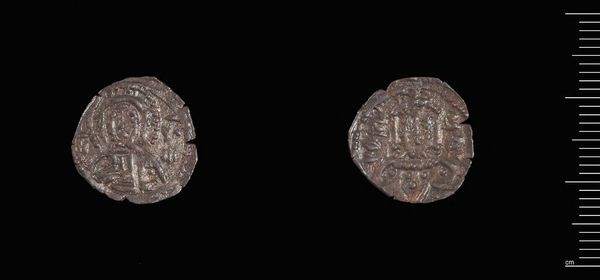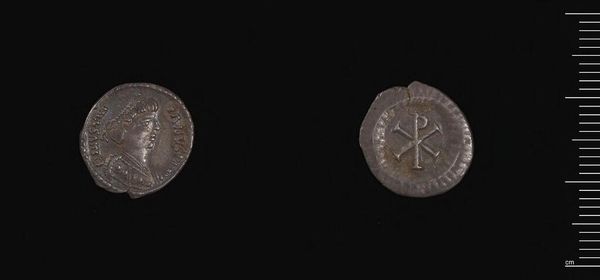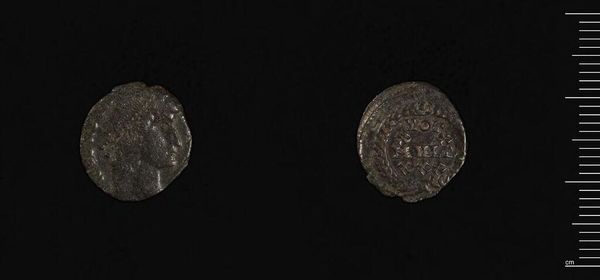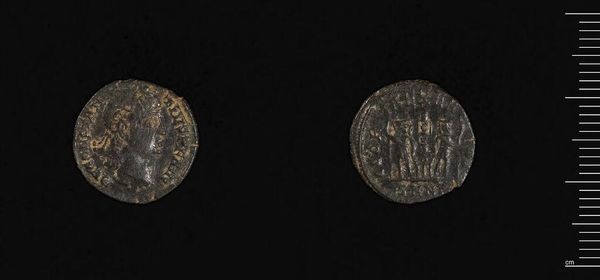
Dimensions: 1.36 g
Copyright: CC0 1.0
Curator: Immediately, I'm drawn to its eroded surface—the marks of time and circulation. It's a tangible link to the past. Editor: This is a Nummus of Constantius II. Consider it not just as currency, but as a potent artifact produced under the reign of Constantius II. Curator: Absolutely. The material itself, likely bronze, speaks to the resources and craftsmanship available during that era. How were these made, and who was involved in their creation? Editor: The formal composition, even in its worn state, still allows us to decode the visual language of power—the emperor's portrait, the inscriptions. Curator: Right, and what did this representation mean to the people who used it? The weight of 1.36 grams is also worth considering. Editor: It's fascinating how an object so small encapsulates such broad historical, economic, and artistic narratives. Curator: Indeed. Contemplating the hands that handled this coin, the transactions it facilitated, gives us a glimpse into daily life. Editor: Yes, a deep dive into Constantius' coin design and material unlocks a window into the semiotics of imperial authority.
Comments
No comments
Be the first to comment and join the conversation on the ultimate creative platform.
